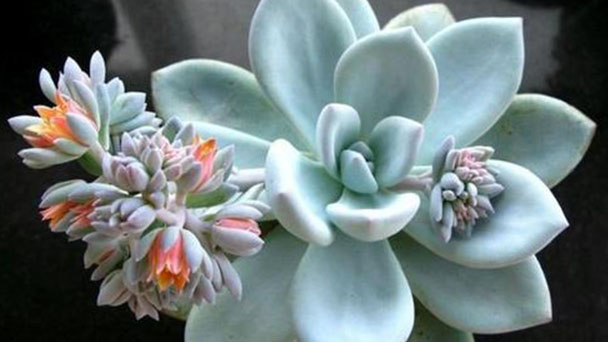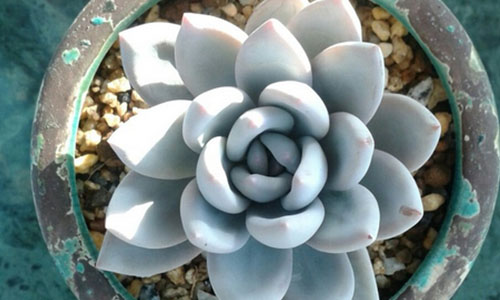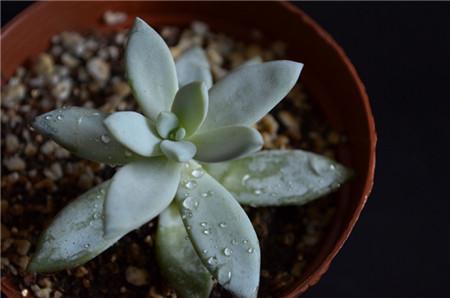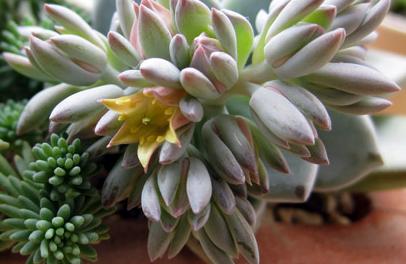Breeding methods and precautions of Echeveria Simonoasa
Written by Maggie
Jan 08 2021

In the process of propagating Echeveria Simonoasa, the mixed soil of rotten leaf soil, river sand, garden soil and furnace slag should be selected as the culture soil. During the growth period, the soil should be placed in an environment with the appropriate temperature, shaded for a short time in summer. The flowerpot should be rotated every day, the soil should be kept dry to the best, and the soil should be pruned and picked properly.

Propagation of Echeveria Simonoasa
1. Soil preparation
Echeveria Simonoasa likes to grow in well-drained and breathable sandy soil, which can facilitate the drainage of the root system. The mixed soil of 3 parts leaf rot soil, 3 parts river sand, 1 part garden soil and 1 part furnace slag can be used as the culture soil when potted in the family. After that, the pot is changed every 1-2 years in the spring, the old roots are pruned properly and then put into the pot again.
2. Environmental treatment
The more abundant the sunshine and the larger the temperature difference between day and night, the leaves can be brightly colored and full of luster. During the curing period, put them in the sunny place with appropriate temperature. Avoid direct strong light, and rotate the flowerpot regularly every day to ensure even exposure to light.
3, Suitable water
Since Echeveria Simonoasa contains a lot of water inside, it is not necessary to water it frequently during the usual curing period. It is better to keep the principle of "no watering, watering thoroughly". When the temperature is higher than 35℃ or lower than 15℃, the plant grows slowly, so the watering frequency can be reduced or the soil can be kept dry.

4. Pruning
Pruning is one of the breeding methods and precautions of Echeveria Simonoasa. During the growth period, the dried old leaves should be removed in time to avoid the breeding of germs. The heart cutting should be carried out according to the growth of the plant, and the cut parts can be used for cutting propagation to become new plants.
Matters needing attention for breeding Echeveria Simonoasa
Due to the poor cold resistance of Echeveria Simonoasa, preparations should be made for cold protection and insulation in winter. The plants can be entered and maintained in advance at the end of autumn, and the cold wind should be avoided. At the same time, water should not splash into the leaves, so as to avoid the rot phenomenon.

Latest Updated
- Benefits of Bugleweed - 7 Science-backed Health Benefits
- Bugleweed Dangers & Side Effects - Is It Poisonous?
- How to Plant Evergreen Trees - What You Should Know
- When to Plant Evergreens - Grow Guide for Evergreen Trees
- 12 Wonderful Evergreen Shrubs for Your Garden
- 12 Popular Evergreen Plants with Pictures for Beginners
- When And How To Prune A Lilac Bush Like a Pro
- How to Grow & Care for Lilac Vine (Hardenbergia Violacea)
- Japanese Lilac Tree (Syringa Reticulata) Care & Propagation Guide
- Shumard Oak Pros and Cons - What to Know
Popular Articles
- Winter maintenance of Antirrhinum Majus
- How to Grow Terminalia Mantaly Tree
- How to Grow and Care for Crossostephium Chinense
- How to grow Antirrhinum Majus in spring
- Peristeria Elata (Dove Orchid) Profile: Info & Care Guide
- Underwatered Snake Plant (Sansevieria Trifasciata) - Signs And How To Fix
- How to Care for Brazilian Jasmine Plant (Mandevilla Sanderi)
- How to Grow & Care for Graptopetalum Purple Delight in Summer
- Rosa Chinensis (China Rose): Plant Growing & Care Tips
- How to Care for Baby Sun Rose (Aptenia Cordifolia)